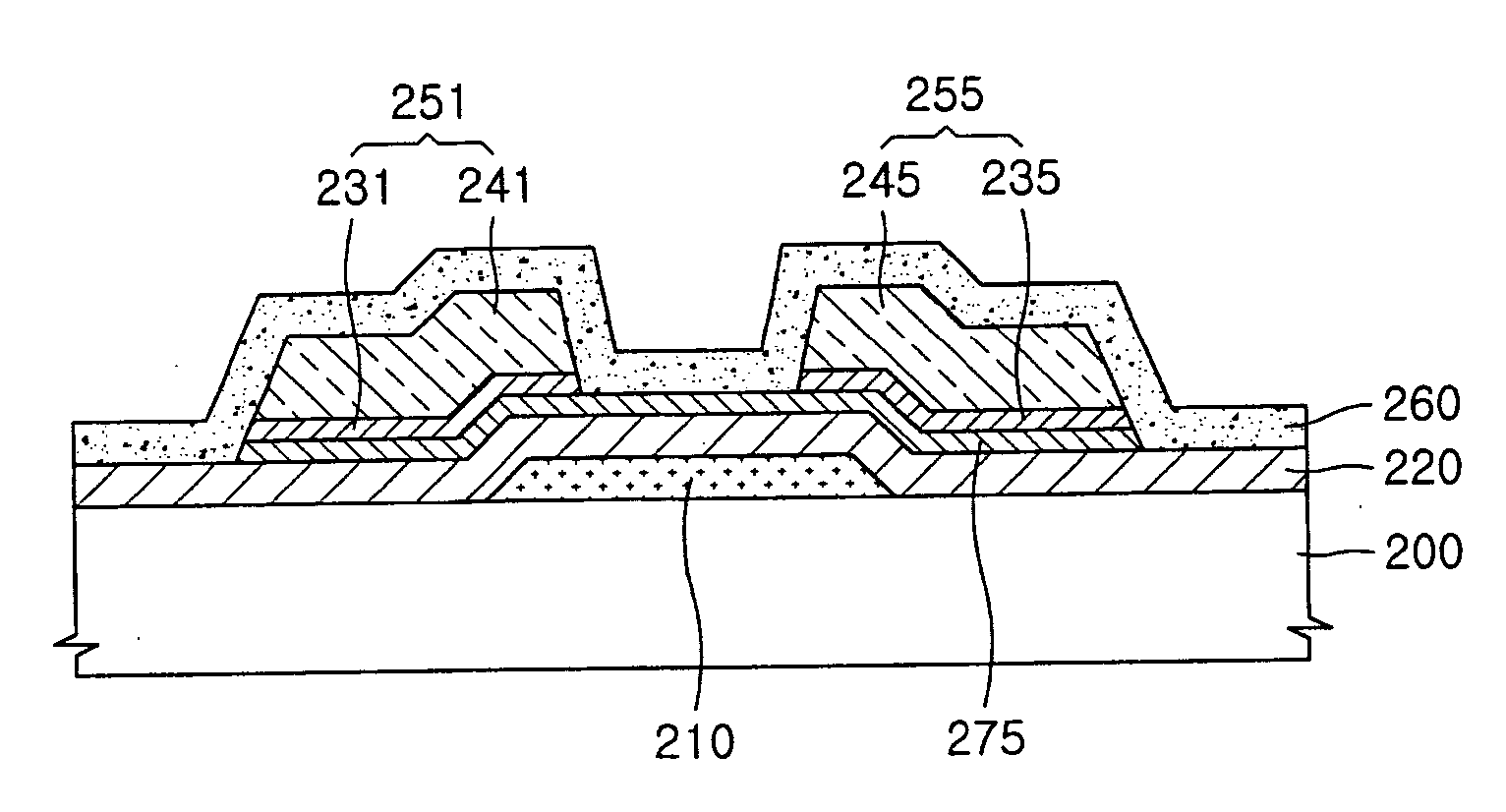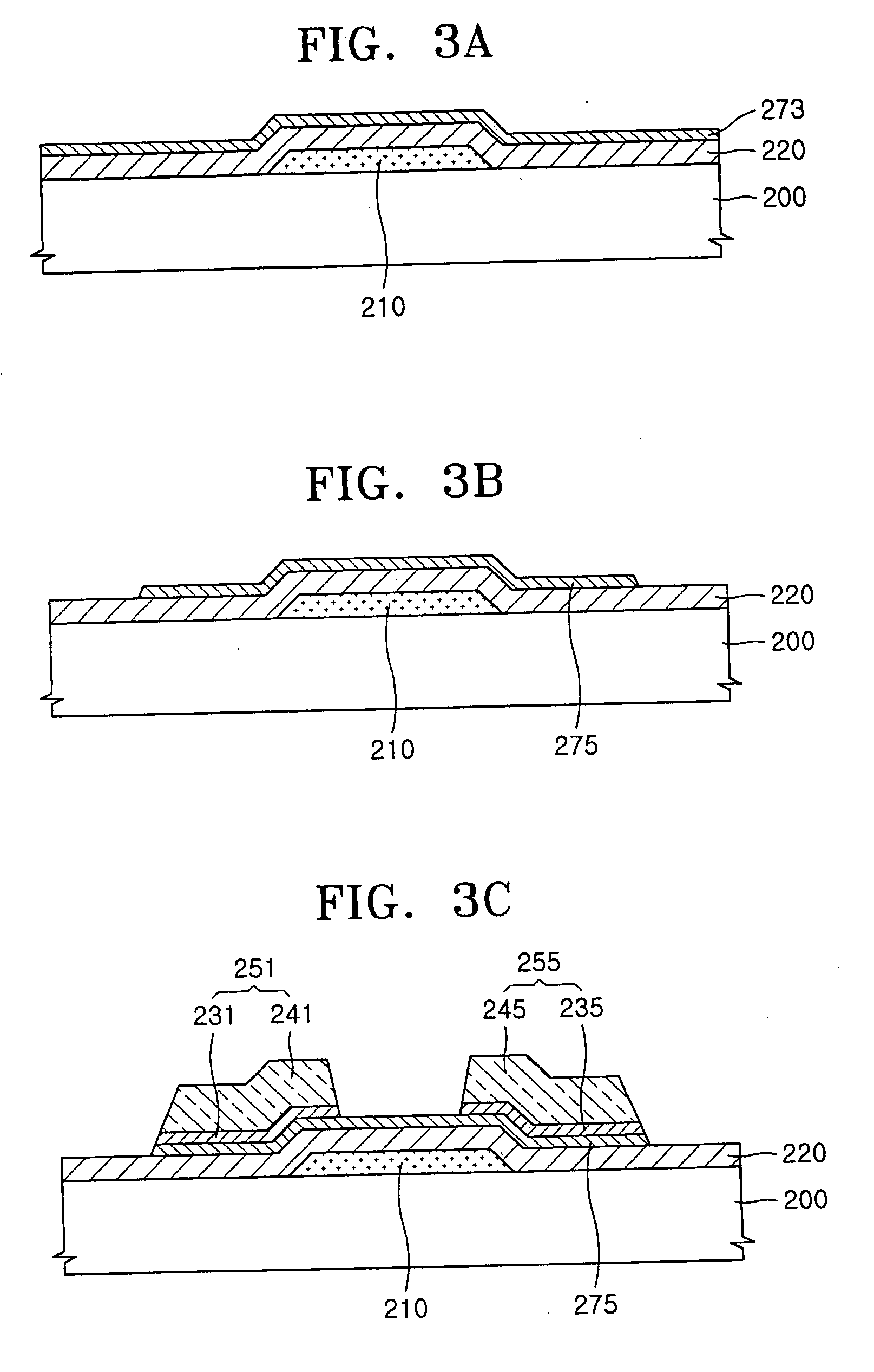Thin film transistor and method of fabricating the same
a thin film transistor and gate insulating layer technology, applied in semiconductor devices, photovoltaic energy generation, solid-state devices, etc., can solve the problems of poor contact resistance between the source/drain electrode and the gate insulating layer, and achieve good adhesion, good adhesion, and improved contact resistance
- Summary
- Abstract
- Description
- Claims
- Application Information
AI Technical Summary
Benefits of technology
Problems solved by technology
Method used
Image
Examples
first embodiment
[0034] Turning now to FIG. 2, FIG. 2 is a cross-sectional view of an organic thin film transistor (OTFT) according to the present invention. Referring to FIG. 2, a gate electrode 210 is formed on portions of the substrate 200 and a gate insulating layer 220 is formed on the gate electrode 210 and on remaining exposed portions of the substrate 200. An adhesive layer 275 is formed on the gate insulating layer 220 and source / drain electrodes 251 and 255 are formed on portions of the adhesive layer 275 leaving other portions of the adhesive layer 275 that corresponds to the gate electrode 210 exposed. A semiconductor layer 260 having a predetermined conduction type, for example p-type, is formed on the source / drain electrodes 251 and 255 and on the exposed portions of the adhesive layer 275.
[0035] The substrate 200 can be made of glass or silicon. The substrate 200 can instead be made of plastics, such as polyethylene terephthalate (PET), polyethylene naphthalate (PEN), polyether sulfon...
second embodiment
[0051] Turning now to FIG. 5, FIG. 5 is a cross-sectional view of an organic thin film transistor (OTFT) according to the present invention. The OTFT illustrated in FIG. 5 has the same cross-sectional structure as in FIG. 2 except that the source / drain electrodes are made of the electrode layers only and do not include the binding layers 231 and 235.
[0052] Referring now to FIG. 5, a gate electrode 310 is formed on a substrate 300 and a gate insulating layer 320 is formed on the gate electrode 310 and on exposed portions of the substrate 300. An adhesive layer 375 is formed on the gate insulating layer 320 and source / drain electrodes 351 and 355 are formed on the adhesive layer 375. Between the source electrode 351 and the drain electrode 355 remains an exposed portion of the adhesive layer 375 that corresponds to the gate electrode 310. A semiconductor layer 360 is formed on top of the resultant structure, including the source / drain electrodes 351 and 355 and the exposed portion of ...
PUM
| Property | Measurement | Unit |
|---|---|---|
| adhesion | aaaaa | aaaaa |
| work function | aaaaa | aaaaa |
| insulating | aaaaa | aaaaa |
Abstract
Description
Claims
Application Information
 Login to View More
Login to View More - R&D
- Intellectual Property
- Life Sciences
- Materials
- Tech Scout
- Unparalleled Data Quality
- Higher Quality Content
- 60% Fewer Hallucinations
Browse by: Latest US Patents, China's latest patents, Technical Efficacy Thesaurus, Application Domain, Technology Topic, Popular Technical Reports.
© 2025 PatSnap. All rights reserved.Legal|Privacy policy|Modern Slavery Act Transparency Statement|Sitemap|About US| Contact US: help@patsnap.com



